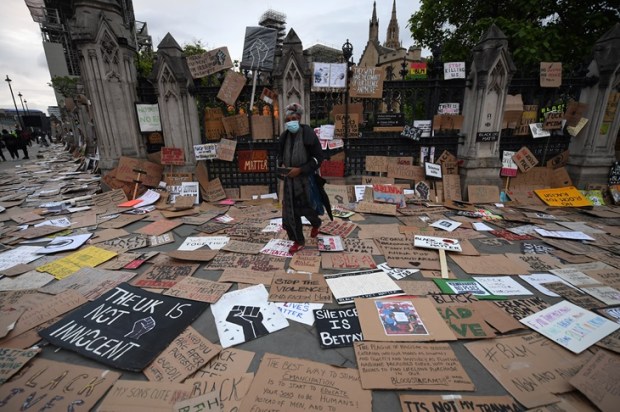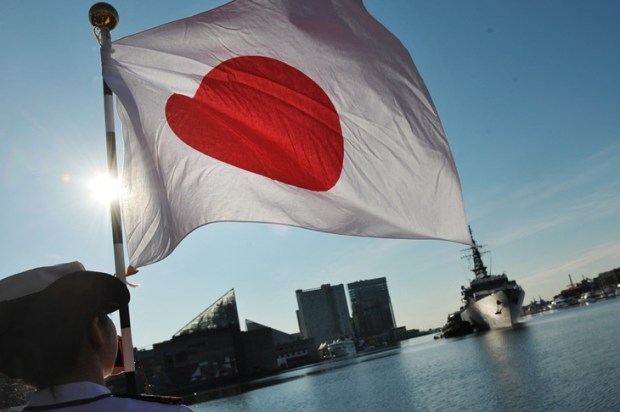Let’s rewind time by about a year. Back then I would have said suicide was one of those awful things that impacted other people, strangers and so on — not me and my family. That all changed on February 6, 2019, when my brother chose to end his life. His suicide came as a terrible shock: I was blindsided. A solicitor and high-level public servant with the Queensland government, my brother was intelligent, hard-working, and well–respected amongst his peers. He died at the age of fifty-three. At the time of his death, he’d been living alone for three years, having separated from his wife with whom he shared four children.
For those of us left behind, existence seems to have taken on a stark dichotomy: there’s the time ‘before’ my brother died, and the time ‘after’. He crossed this vast chasm alone, then promptly burnt the bridge behind him. In the dreadful aftermath, we’ve all been trying our best to ‘get on’ with things. What other choice is there? Don’t mistake this attitude for apathy. I can’t accept that my brother’s choice to die was okay. Suicide is never okay. But what’s done is done, and no matter how much I wish things were different, there’s no bringing him back.
On the day of my brother’s death, I’d been teaching a writing workshop at a high school on the Sunshine Coast. In class, I received a missed call from my sister. Later, when driving to Brisbane where I was scheduled to present a night-time workshop, I connected my mobile to Bluetooth and rang back. She was concerned, she said, because she hadn’t heard from our brother in a while and he wasn’t returning her calls. This was unusual. During an earlier phone conversation, she’d learnt that he hadn’t been returning his wife’s calls either. This was even more unusual. She’d suggested that my brother’s wife drop by his unit and check on things. I asked her to keep me posted, then tried calling my brother, who didn’t pick up.
When my sister next rang shortly afterwards, she was distraught. She said our brother’s wife had entered his unit because his car was parked out front, even though he should’ve been at work. She’d then found a note attached to the internal garage door, warning against entering and advising to “call an ambulance”.
Upon hearing this, I knew he was gone. So did my sister. This unspoken realisation travelled between us via a strange, inner conduit perhaps best described as shared intuition. I told her I was going to detour off the motorway and head straight to our brother’s. She agreed to meet me there within the hour.
That drive was one of the most surreal experiences I’ve ever had to endure. I needed to draw upon all my will to stay focused, to push back a terrible, black shadow that loomed at the edges of my vision. The passing of time seemed excruciatingly slow, the road ahead interminably long. In hindsight, I think I was battling symptoms of shock, mentally holding them at bay. When at last I turned into my brother’s street, I saw police cars everywhere. There was an ambulance parked in his driveway. Lights off. Siren silent. My sister hadn’t yet arrived, and my brother’s wife had gone home after finding the note, understandably traumatised. I didn’t want to go inside alone but couldn’t bring myself to just sit in the car. Eventually, I got out of the vehicle and tread towards my brother’s unit. The ground beneath my boots seemed treacherous somehow, unstable. Reaching the front door, I walked inside to find his living room filled with people: police, paramedics, and a couple of men dressed in plain clothes.
There was an awful silence as everyone turned to look at me.
Finally, I said, “I’m his sister. Is he dead?”
An officer stepped forward and spoke: “Yes.”
I knew it was coming, still, the word hit me straight in the chest like a fist. Instantly, I dissolved into tears. The officer led me outside where we talked a while. He calmly answered my questions and explained how my brother had taken his own life. When he was done, I sat on the front patio and tried to comprehend what I’d been told.
My sister arrived before long. A little later, grasping each other’s hand, we went into my brother’s garage and proceeded to undertake the task of identifying his body. Some things in life leave a permanent imprint upon your memory. This is a case in point. ..a nd for all the wrong reasons.
My brother’s suicide is undeniably the worst thing I’ve ever lived through, but the experience brought with it a crucial lesson: in order to heal, you’ve got to allow yourself to feel the pain of grief, then let it go.
In many countries, the number of deaths by suicide is on the rise. The World Health Organisation estimates close to 800,000 people die due to suicide every year. This number translates to roughly one person every 40 seconds. In 2017, 3,046 people took their own life across Australia, which made intentional self-harm the 14th leading cause of death, moving up from 15th position the previous year. Significantly, the Australian Bureau of Statistics reports that deaths from intentional self-harm occurs amongst males at a rate three times greater than that for females. Beyond Blue, the organisation dedicated to creating mentally healthy lives has also found LGBTQ+ youths are more at risk of acting on suicidal thoughts, as are indigenous people, who die by suicide at twice the rate of non-indigenous Australians.
There’s no obvious culprit for the escalation in suicide rates, but there are a few risk factors =– or ‘stressors’ that increase the chances of suicide — coming to the fore. A 2019 report prepared for Suicide Prevention Australia identifies various socio-economic changes, including increasing mortgage stress and the rise of ‘buy-now-pay-later’ services, as problematic. Burgeoning debt, the paper explains, is “leading to mental distress and worsening mental health outcomes.” The rise of a ‘gig economy’, where an increasing number of people are employed on a contract basis rather than under long-term workplace arrangements, is flagged as another issue of concern. These arrangements are said to have “the potential to further isolate individuals who suffer from loneliness and a lack of connection by no longer having regular colleagues or fixed workplaces.”
The effects of climate change are also having a devastating impact upon the mental health of many Australians. Unseasonal and extreme weather events, such as droughts, bushfires, and floods, have resulted in the loss of lives, homes, land, and wildlife. Such experiences are particularly tough for farmers. According to a 2017 paper published in Social Science & Medicine, “recently observed patterns of climate change have exacerbated farmers’ worries about the weather, undermined notions of self-identity, and contributed to cumulative and chronic forms of place-based distress, culminating in heightened perceived risk of depression and suicide.” Research also shows that Australians living in remote regions die on average from suicide at twice the rate of city people. It’s therefore critical that GP’s and other health professionals working in rural areas receive the training they need to deliver effective care and support to vulnerable people.
It’s fair to say that numerous stressors are driving the surge in suicide rates across Australia and much of the world. And herein lies the rub: how can we, as a society, effectively mitigate a person’s specific set of risk factors before it’s too late? Coming up with feasible and practical answers is, I believe, where we need to invest the bulk of our time, energy, and resources if we’re to avoid an ‘ambulance at the bottom of the cliff’ approach.
Importantly, certain protective measures can be taken to help safeguard individuals from suicide. The most successful of these rely upon strategic and well-coordinated mental health programs. In Japan, for example, there’s been an overall decline in the number of people taking their own life since the introduction of a national suicide prevention plan in 2007. The plan promotes local suicide prevention activities and includes public awareness campaigns designed to reduce the stigma surrounding mental health issues. It’s also seen reforms to data collection processes that have mandated the National Police Agency to release detailed municipal-level suicide statistics every month. This approach has facilitated the alignment of protective measures with local needs. Vickie Skorji, Director of Tokyo’s crisis hotline TELL, offers some insights into Japan’s initiatives.
“For any campaign against suicide or mental illness to be effective,” Skorji says, “it needs to be a combination of research targeted at specific demographics, campaigns aimed at changing people’s attitudes towards mental illness, and the provision of a range of community-based services and support. In Japan, they’ve been very good at the research and less so in the other two areas, but this is slowly changing.”
In Scotland, the implementation of a national suicide prevention strategy achieved similar success, with a 20 per cent reduction in suicide rates over the periods 2002-2006 and 2013-2017. Launched in 2002, the strategy targeted those groups most at risk: young people, those with mental health problems, people with a record of self-harm, drug-users, and prisoners. Importantly, it led to the establishment of various support groups. Take, for instance, the Men’s Suicide, Harm, Awareness, Recovery and Empathy (Share) project, set up in 2009. A cornerstone of Share’s strategy is equipping individuals with problem-solving skills that foster the resilience required to move through, and recover from, suicidal tendencies; it’s also a place where men can go for a chat, to play cards, or have a game of footy.
Scotland’s prevention strategy expired at the end of 2016 and the number of people taking their own life has again been climbing. In 2018, there were 784 probable deaths by suicide, up from 680 the previous year. I have no evidence to suggest a direct correlation between cessation of the prevention strategy and the recent jump in suicide rates, but it makes you wonder.
Back in Australia, positive steps are being taken to address the country’s troubling suicide trends. In mid-2019, Prime Minister Scott Morrison appointed National Mental Health Commission chief executive Christine Morgan as the National Suicide Prevention Adviser. The creation of this advisory position reflects the Government’s push ‘towards zero’, an approach that asserts suicide should be preventable when people are in contact with a health service. On a similar note, many have welcomed a recent announcement by the Federal Government to inject $64 million into funding suicide prevention measures as recommended by Morgan; but there’s some way to go before we achieve a coordinated national strategy. A 2019 report by the National Mental Health Commission affirms this.
“While there are significant reforms underway at national, state and local levels,” the report says, “it’s crucial that we maintain momentum and implement these recommendations to ensure sustained change for consumers and carers. The mental health system in Australia is complex and fragmented, with roles and responsibilities spread across governments, as well as the non-government and private sectors.”
Not surprisingly, Suicide Prevention Australia CEO Nieves Murray has called for a more integrated approach to tackling the problem. “An immediate priority for the suicide prevention sector is to investigate and understand how to best support vulnerable people,” says Murray. “To achieve a long–term, significant decline in the suicide rates … we need a system to support a whole–of-government approach to suicide prevention. This will ensure every agency addresses suicide risk in a coordinated way so that fewer people reach crisis point.”
Clearly, a cohesive, cross-agency approach to implementing suicide protection measures is imperative if we’re to improve healthcare outcomes and, ultimately, save lives. Thankfully, several governments and mental health experts around the world are embracing such strategies, while Australia is proceeding in the right direction.
And what about the estimated six or more “suicide survivors” left behind in the wake of every suicide death? How do we move forward? Unfortunately, there are no clear-cut answers. The trauma caused by losing a loved one to suicide is complicated and recovery unfolds differently for everyone. I do know it’s helped for me to keep busy: I write, I read, I run, I teach. I also maintain a strong support network by staying in close contact with friends and family. Yet, even now there are times when I cry. But like I said, in order to heal, you’ve got to allow yourself to feel the pain of grief, then let it go. And gradually, day-by-day, things become a little easier.
Eileen Herbert-Goodall is an Australian-based writer of fiction and non-fiction.
If you or anyone you know needs help please contact Lifeline on 13 11 14.
Got something to add? Join the discussion and comment below.
Got something to add? Join the discussion and comment below.
Get 10 issues for just $10
Subscribe to The Spectator Australia today for the next 10 magazine issues, plus full online access, for just $10.


























Comments
Don't miss out
Join the conversation with other Spectator Australia readers. Subscribe to leave a comment.
SUBSCRIBEAlready a subscriber? Log in